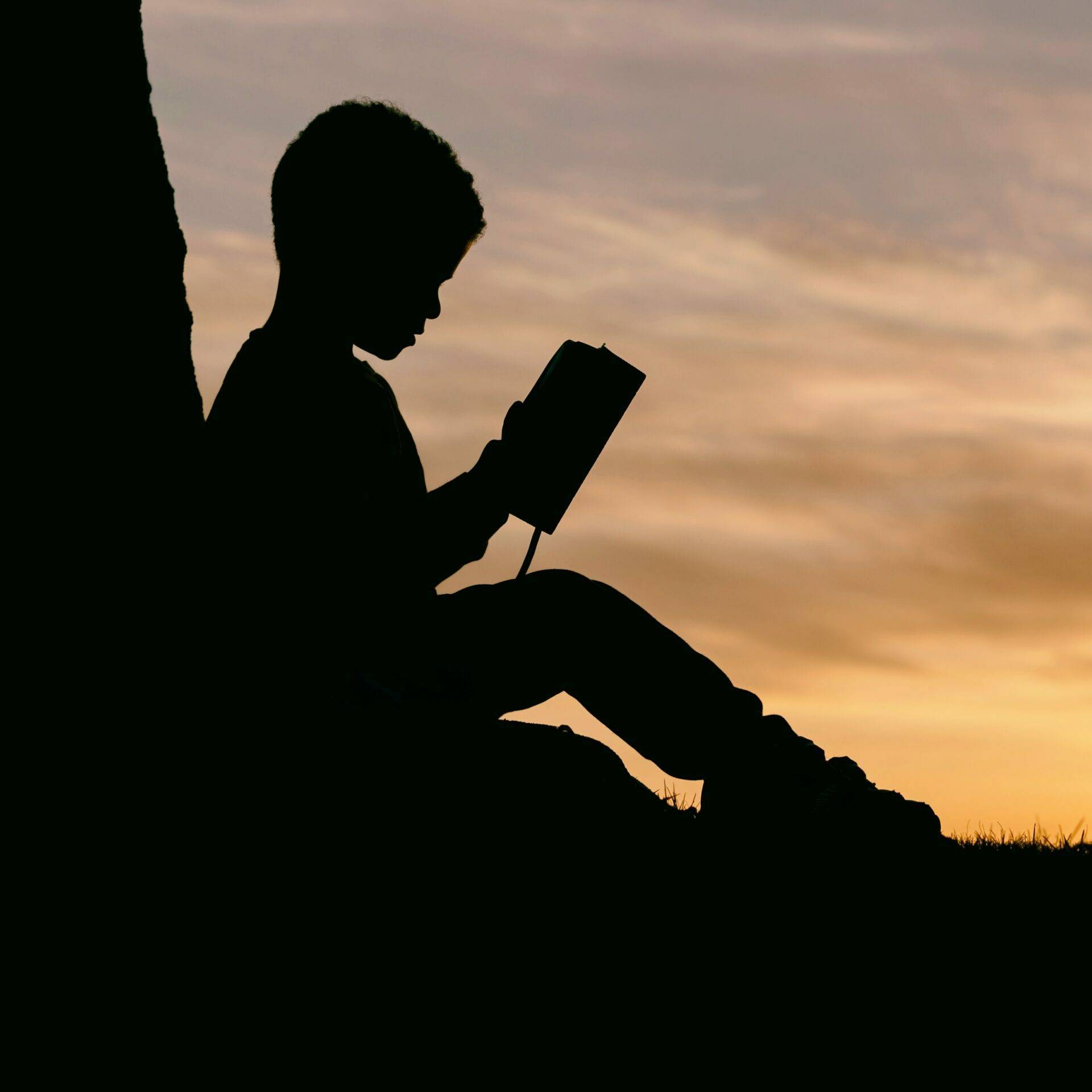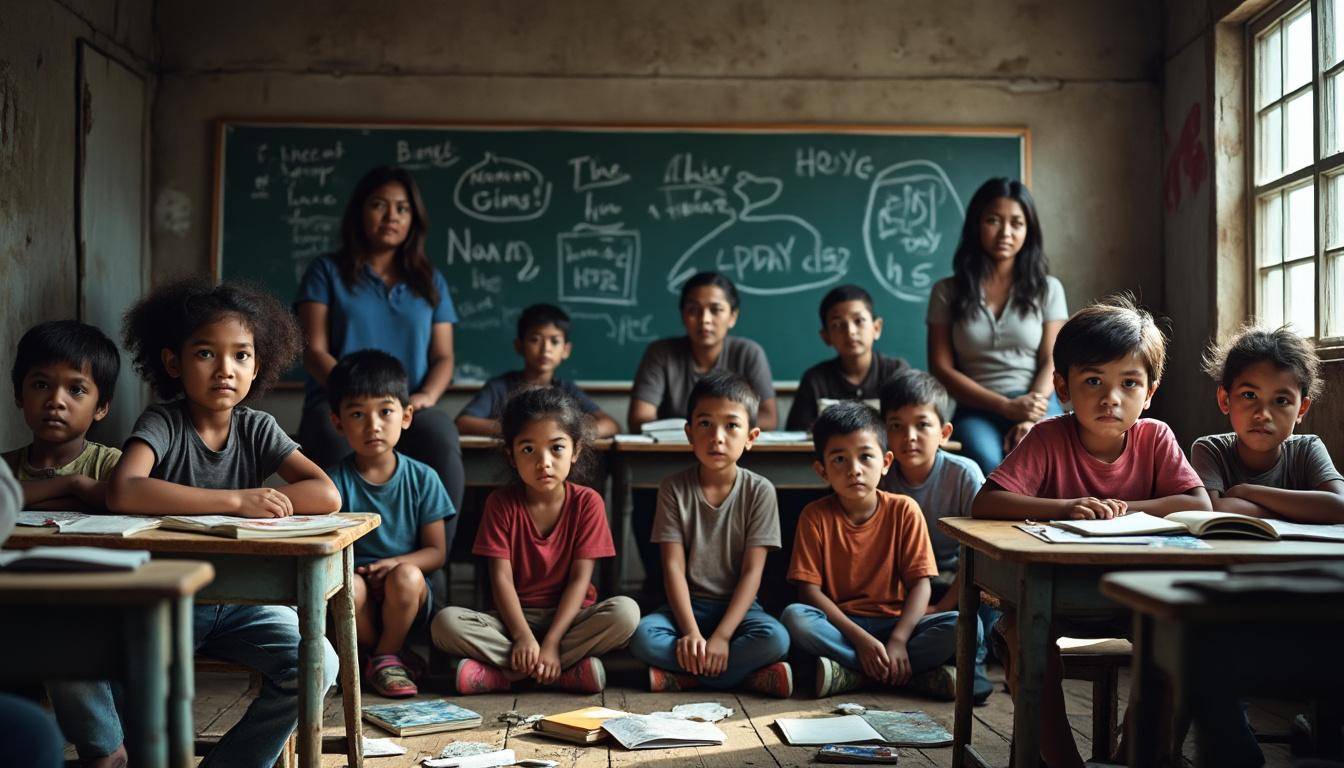The Displacement of Learning in Gaza: Two Years of Interrupted Education and Its Long-lasting Impact
Since October 2023, the education system in Gaza has faced unprecedented challenges. Over two years have passed without normal schooling for countless children and teachers, profoundly disrupting their lives and futures. The destruction of schools, displacement of families, and persistent insecurity have transformed learning from a right into an ongoing struggle for survival.
Lives Torn Apart: The Human Story Behind Gaza’s Educational Crisis
Juwayriya Adwan, a 12-year-old from al-Mawasi, Khan Younis, last stepped inside a real classroom in 2023 at Khawla Bint al-Azwar school. Today, her school is reduced to rubble, her books destroyed, and several friends lost forever. Now living in crowded, insecure shelters, children like Juwayriya cling to fragments of their past education, often studying under power failures or amid airstrikes in small tents operated by volunteers or through intermittent online lessons.
- Loss of School Infrastructure: Over 90% of Gaza’s school buildings have been destroyed or repurposed as shelters, according to reports by UNICEF and Education Cannot Wait.
- Disrupted Learning: Frequent displacement, power outages, and ongoing violence have halted consistent school attendance for more than 400,000 children.
- Psychological Impact: Children carry trauma from loss of family, homes, and the familiar routine of school, leading to diminished concentration and motivation to learn.
Juwayriya’s aspiration to become a journalist to share Gaza’s children’s stories underscores the resilience and determination persisting despite these hardships.
Teachers’ Determined Resistance: Educating Amidst Ruins
Teachers like Naglaa Weshah in the al-Bureij camp have seen their classrooms turned to shelters or rubble but continue their mission undeterred. Before the war, Naglaa taught hundreds of eager students, nurturing creativity through art, play, and storytelling. Now, she teaches wherever possible — in tents, damaged rooms, or crowded shelters — embodying education as an act of defiance and hope.
- Adaptive Learning Settings: Classes held in informal settings with short lessons interrupted by power and safety issues.
- Community and Volunteer Mobilization: Organizations like Save the Children and Global Partnership for Education provide essential volunteer training and materials.
- Emotional Toll on Educators: Many teachers are also parents struggling to provide stability for their own children amidst shortages of food, water, and safe shelter.
Despite the horrors, Naglaa remains committed to the belief that one day Gaza’s children will return to safe schools filled with laughter and learning.
Childhood in Suspension: The Lost Normalcy for Gaza’s Youngest
Children like nine-year-old Sarah al-Sharif from Gaza City vividly recall the last day of school in 2023, before her school and home were shattered by the conflict. The ongoing war has rendered many Gaza children survivors of trauma rather than students, severing their routine, dreams, and ability to concentrate on academics.
- Frequent Displacement: Families often move multiple times, leaving behind homes and education resources.
- Interrupted Childhood: Children must spend their days queuing for necessities instead of learning or playing.
- Inaccessible Learning Resources: With electricity and internet unreliable, online studies remain out of reach for many.
- Lost Future Hopes: Interrupted schooling hinders aspirations such as Sarah’s desire to become a doctor.
The recognition by humanitarian groups such as UNICEF and Human Rights Watch that education is not a luxury but a right underscores the need for urgent action in Gaza.
Beyond Borders: Displacement and the Struggle to Continue Education
Seven-year-old Ismail Muneifah’s story epitomizes the plight of Gaza’s displaced children. Forced to flee to Cairo after their home in Al-Maghazi was bombed, Ismail has not attended formal school in over two years. Though his family hopes to enroll him in an informal refugee school, the lack of recognized certification and resources limits his educational progress.
- Long-lasting Displacement: Families remain in limbo across regional borders, separated from familiar education systems.
- Informal Schooling Options: Refugee children attend makeshift classes that provide limited hours and no official diplomas.
- Social and Emotional Disconnection: Watching local children in uniforms evokes longing and a sense of exclusion.
- Support from International NGOs: Groups like Teachers Without Borders and World Vision continue to advocate for displaced children’s education.
Programs with flexible learning schedules and psychosocial support are critical to re-engage displaced children in education and safeguard their future potential.
Global Cooperation and Action Required to Restore Education in Gaza
The extensive educational disruption in Gaza has attracted urgent attention from international organizations. Collaboration among the Global Partnership for Education, UNESCO, Education Cannot Wait, and humanitarian actors such as Save the Children and War Child is critical to rebuild infrastructure, support teachers, and ensure access to quality learning for all children.
- Infrastructure Rehabilitation: Reconstruction of schools with trauma-informed designs prioritizing safety and community use.
- Teacher Training and Support: Psychosocial support and professional development to sustain educators amidst crisis.
- Inclusive Education Programs: Tailored to displaced, disabled, and marginalized children to prevent dropout risks.
- Investment in Technology: Expand access to digital learning through solar-powered devices and mobile internet solutions.
- Advocacy and Global Awareness: Amplify children’s voices to inspire international solidarity and funding commitments.
Recognizing education as a fundamental human right, decisive action informed by local communities and international expertise can forge a path towards recovery, resilience, and renewal for Gaza’s children and teachers alike.


